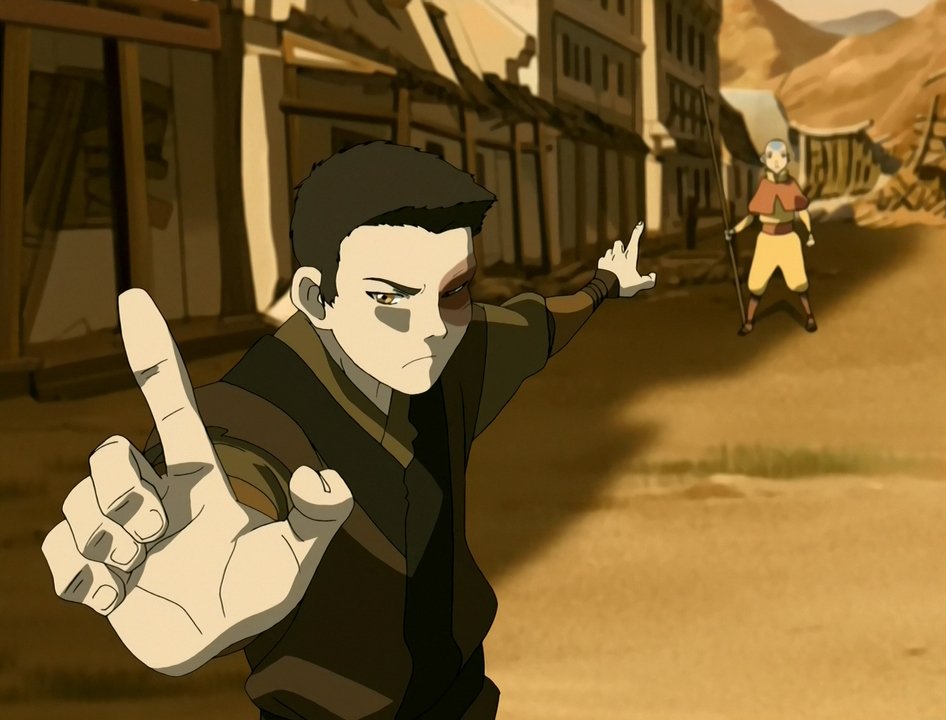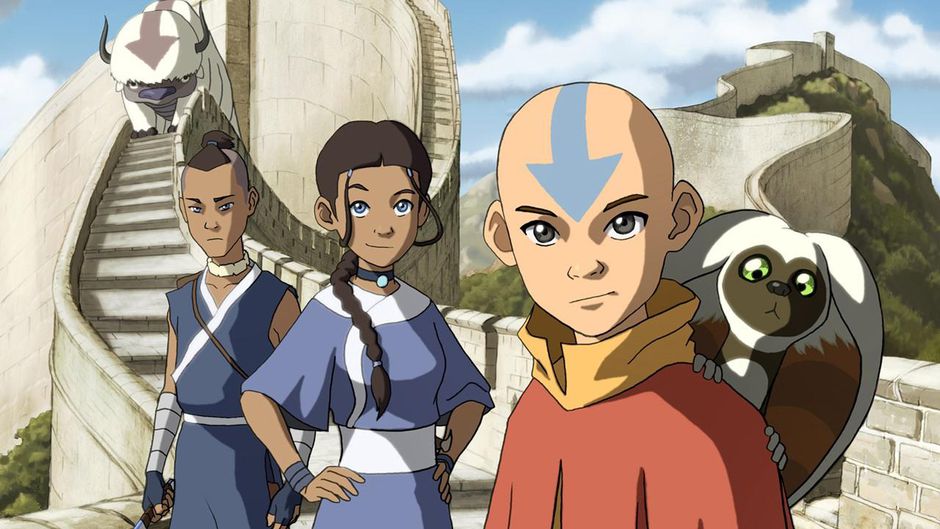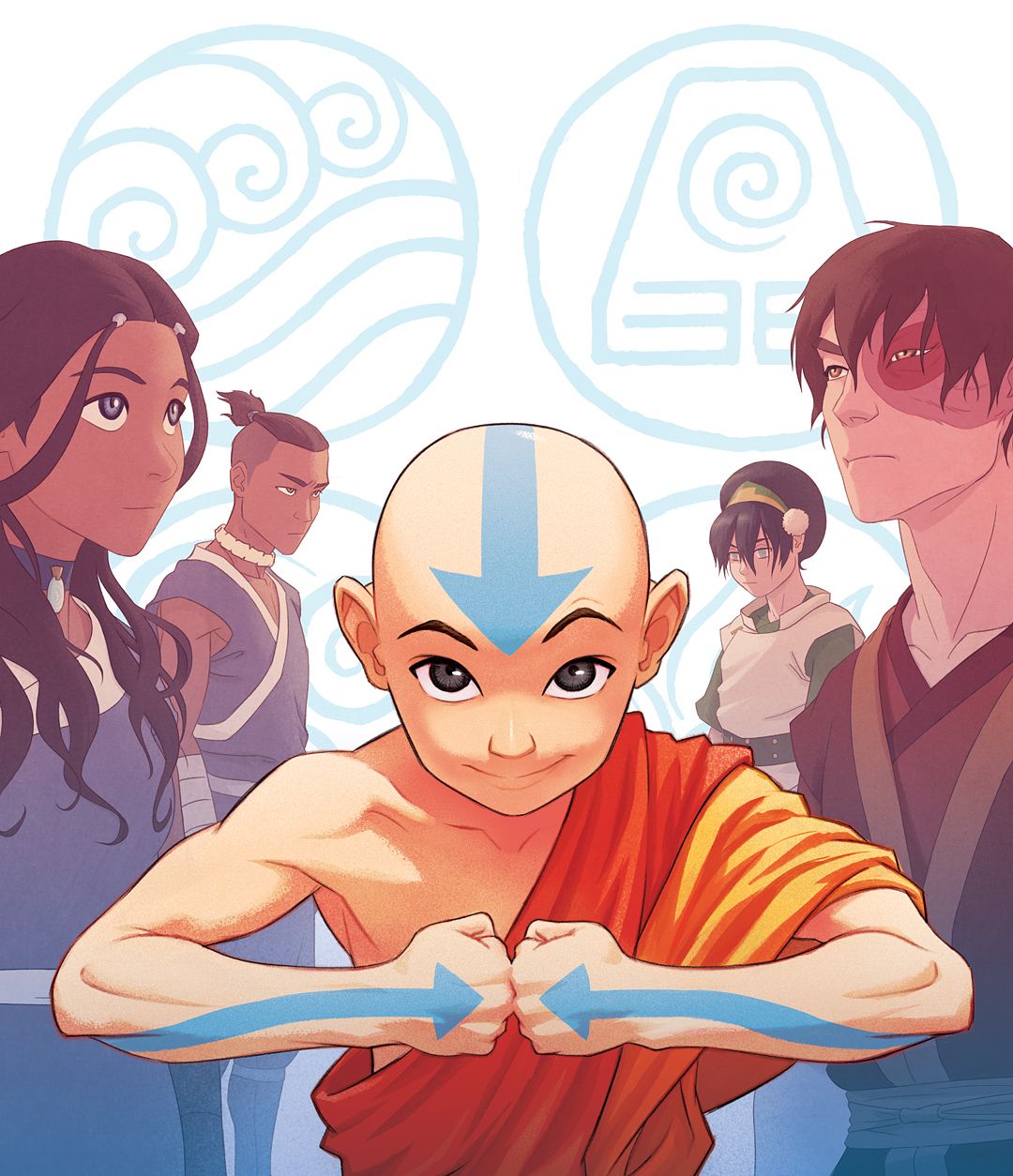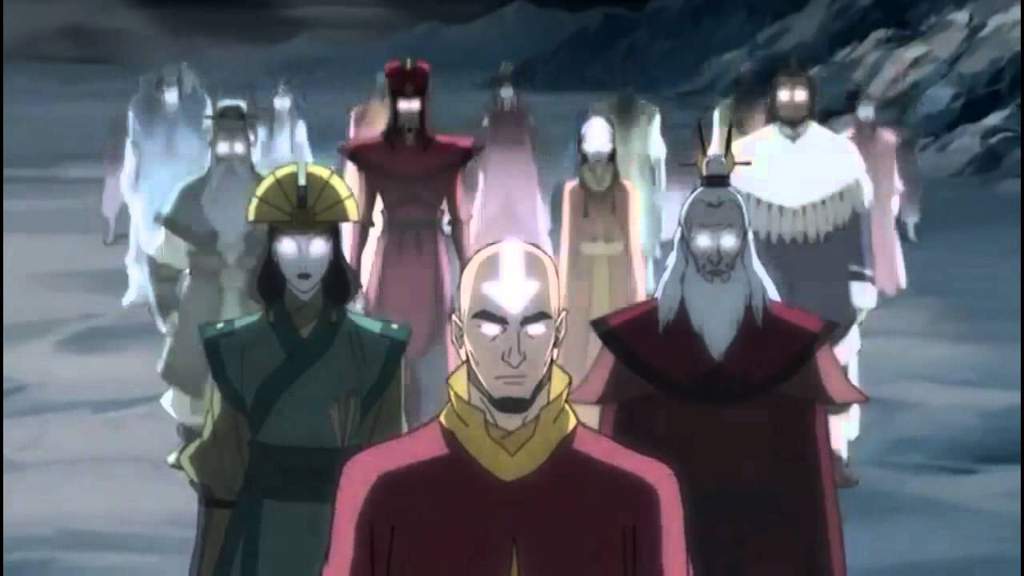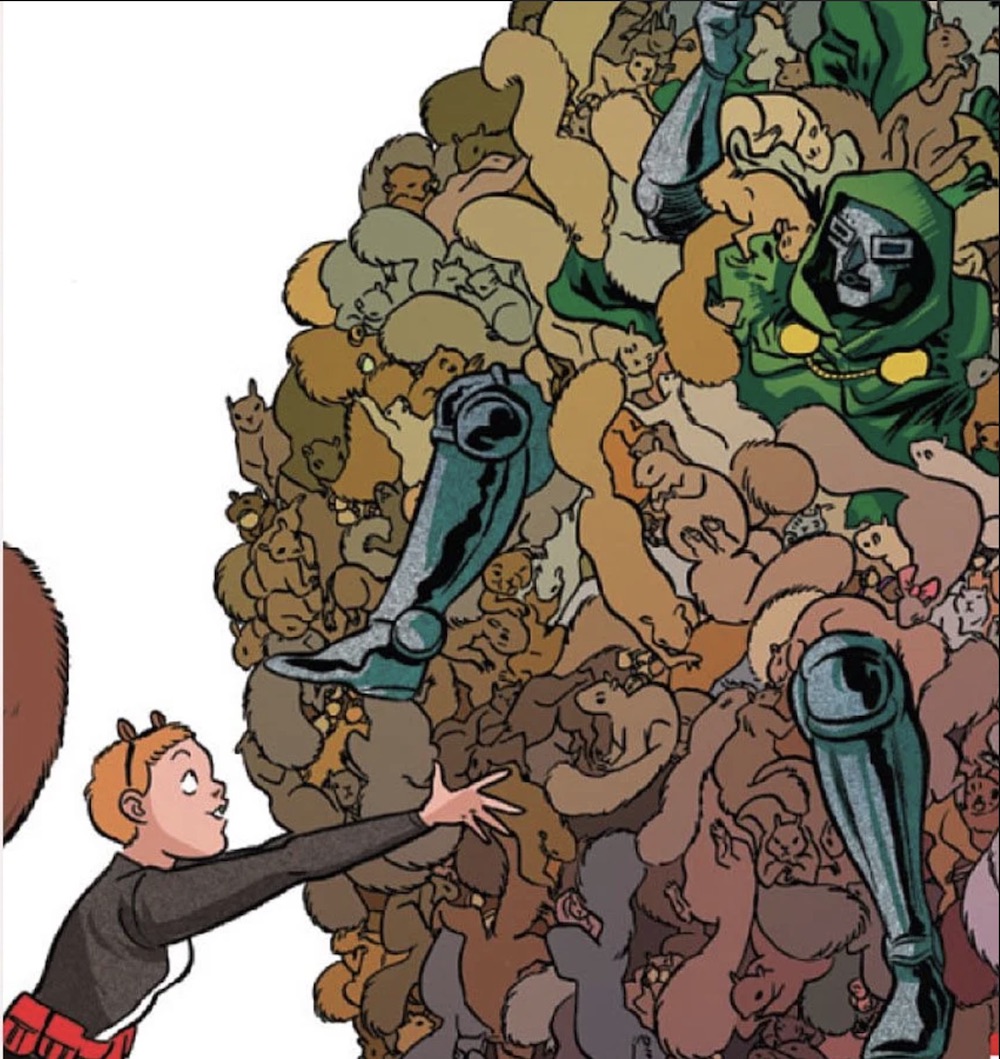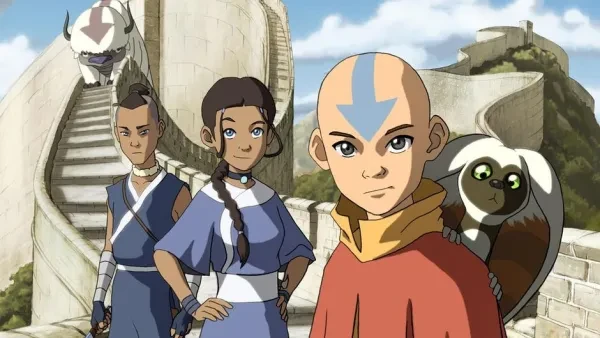
By now, you’ve certainly heard the good news: twelve years after airing its final episode on Nickelodeon, Avatar: The Last Airbender is available to stream on Netflix. It’s breaking streaming records, including spending its first 58(!) days in Netflix’s top 10 most-streamed list as of July 16th. We’ve put together a list of A:TLA’s ten best episodes so you can relive Team Avatar’s most awe-inspiring adventures, so check it out! (Note: There are massive spoilers from this point forward. Proceed accordingly!)
10. The Firebending Masters
In his first episode as a full-blown member of Team Avatar, Zuko’s firebending goes missing. He takes Aang to search for a tribe of sun warriors with connections to the now-extinct dragons, the first creatures to firebend, hoping to reinvigorate his bending.
What’s great about “The Firebending Masters”:
- Even after spending the better part of three seasons as enemies, Aang and Zuko have a great chemistry right from the jump. From Aang jabbing at Zuko’s intelligence to slap-fighting over their flames, the rapport between the two is a strength of this episode.
- “The Firebending Masters” gifts us two of the most dazzling visual moments in the series: Ran & Shaw’s dragon dance, and the pillar of rainbow flames that surrounds Zuko and Aang.
- In yet another example of him being the greatest, we learn that Iroh, the last person thought to have slain a dragon for sport, lied about their extinction in order to protect them.
9. The Library
Having found an earthbending teacher, the group’s next undertaking is finding a secret to defeating the firelord. They come across a man in search of a legendary “secret library” that’s been lost to time, and he agrees to guide them through the desert in exchange for transportation.
What’s great about “The Library”:
- For a one-off character, Wan Shi Tong makes a lasting impression. He’s physically imposing—as are most 30-foot-tall owls—but he’s more than just random, villain-of-the-week fodder: his disdain for humans traces directly back to the Gaang through Zhao’s invasion of the northern water tribe.
- Things are looking bleak as the hours of aimlessly flying through the desert start piling up. Suddenly, Toph—the famously blind earthbender—lights up, points in the distance, and shouts, “There it is!” It’s one of the best blind jokes in the series.
- Appa’s kidnapping at the end of the episode kicks off an incredible seven-episode run, concluding with “Lake Laogai,” which features some of the best episodes in the series.
- This episode also reveals the date of the solar eclipse, the deadline which drives every decision Team Avatar makes. It’s the first time the show has a definitive endgame.
8. Lake Laogai
Tired of waiting for the city’s permission, Team Avatar takes the search for Appa into their own hands. Along the way, they uncover a government-sanctioned brainwashing operation disguised as a resort, leading to a confrontation with the Dai Li, Ba Sing Se’s secret police force.
What’s great about “Lake Laogai”:
- The Blue Spirit gets its swan song. Although he only dons the mask a few times, Zuko’s alter-ego is a great reminder that he’s a more-than-capable fighter even without bending, and is always a treat to see.
- The Freedom Fighters! Not the most morally inclined operation, sure, but the kids looked to be trekking toward something better…(even as they stole food from the boat captain). Even still, their sacrifice to help Team Avatar escape left just enough room to believe that, with more time, maybe they could’ve grown into something better.
- After nearly two seasons of gently guiding Zuko toward finding himself, Iroh forces Zuko to confront his romanticized notions of “destiny” with some tough love. For the first time in the series—and maybe his life—Zuko decides for himself, releasing Appa and disposing of his mask.
7. The Guru & The Crossroads of Destiny
Having found Appa and warned the Earth King about the war, the Gaang splits up: Aang goes to the Air Temple to learn about the Avatar state, Toph and Sokka meet with their respective parents, and Katara stays with the king in Ba Sing Se. On the Fire side, Zuko’s turn toward good should be just about finished. Now… Err, now! Okay, any second….
What’s great about “The Guru” & “The Crossroads of Destiny”:
- This might be the clearest example of Aang’s duality: He’s initially unable (or unwilling) to let go of his feelings for Katara, but when it’s do-or-die time, he sacrifices those feelings to save her. Aang makes it known often that he never wanted to be the Avatar, but he’s willing to shoulder that burden for the people around him.
- In the latest installment of Katara Mega-Destroys Everything, Katara nearly: slices Azula’s face off with a puddle, traps Azula’s limbs and dismembers her French Revolution style, and fights off a whole army of earthbenders with tentacled water whips. Her growth throughout the series doesn’t get the recognition it deserves.
- Ack! Zuko is still evil! Truthfully, not much I can add to this discourse that’s not obvious; the show had been laying it on thick as far as Zuko’s change of heart, and his bonding with Katara over their lost mothers in the cave seemed to make it official—so those fireballs he hurled at Aang burned extra hot. Still, it’s too devastating a moment to not rehash.
6. The Day of Black Sun (parts 1 & 2)
Because it falls smack-dab in between “The Crossroads of Destiny” and “Sozin’s Comet,” it’s easy to forget about “The Day of Black Sun,” Team Avatar’s first attempt at defeating the firelord. Team Avatar pulls out all the stops to end the war, recruiting soldiers from across the globe—only to find an empty city.
What’s great about “The Day of Black Sun”:
- Lots of familiar faces! The Gaang has really been around town, and A:TLA brings some welcome guests for the occasion: the Mechanist and his son (“The Northern Air Temple”), some grimy-but-pleasant swampbenders (“The Swamp), and Haru and his village (“Imprisoned”) all lend their talents to the cause. It’s a great reminder of how far team Avatar has come—and how big a difference they’ve made in the world.
- One of Azula’s most intimidating characteristics is her ability to get inside her enemies’ heads. Most of the time, she preys on Zuko, but in “The Day of Black Sun,” Sokka gets his turn, as Azula taunts him with his failure to rescue Suki from a fire nation prison.
- Zuko really, truly, finally decides to forge his own path—and his first step is through his father, the man whose manipulation and abuse led Zuko astray in the first place, which makes Zuko’s decision twice as sweet. Oh, and also, this comes after he was this close to turning before Azula tempted him with Ozai in “Crossroads of Destiny,” which makes this twice as twice as sweet.
-
5. The Storm
Along their travels, Team Avatar stops at a small village where Sokka is hired to work on a fishing boat. The fisherman berates Aang for disappearing, and Aang flees into the eye of a storm. Meanwhile, Iroh shoots the bull with some Fire Nation soldiers and tells them about Zuko’s past.
What’s great about “The Storm”:
- A few times throughout the series, A:TLA ponders the Avatar’s place in society. While Katara and many others hold Aang in reverence, zeroing in on everyday people like the fisherman, who resents Aang for being gone for so long, is a sobering reminder that just because the Avatar is back doesn’t mean that everything is okay.
- The Aang–Zuko dynamic is the driving force behind A:TLA, and “The Storm” illustrates why it worked so well: both resign themselves to a “destiny” they didn’t choose out of a sense of duty. “The Storm” rounded out its lead characters and planted the seed for Zuko’s eventual turn for good.
4. The Siege of the North (parts 1 & 2)
In the double-length conclusion of season one, the Fire Nation navy, led by Admiral Zhao along with Zuko and Iroh, attacks the Northern Water Tribe with all its might. Meanwhile, Zuko sets off on his own to capture Aang, who’s venturing aboutthe spirit world.
What’s great about “The Siege of the North”:
- The story of Princess Yue and the Moon Spirit is one of A:TLA’s most bittersweet. Even though she only appeared in a few episodes, her sacrifice—and her father’s resignation to it—made for a tragic and too-early goodbye to a good character.
- The world changing colors in conjunction with the spirits is another visual high-point for the series. Zhao taking the Moon Spirit from the water saturates everything in blood-red, and its death sucks the world into a lifeless grey. Aang’s brilliant-blue, ocean spirit-infused water monster contrasts beautifully, even as it eviscerates hundreds of people
3. Sozin’s Comet (parts 1–4)
As we’ve seen, when it comes to finales, A:TLA does it big—and they don’t get much bigger than “Sozin’s Comet,” Team Avatar’s four-part, series-ending showdown with the Fire Nation. Every character has their moment, every storyline gets wrapped up—it’s a perfect ending to a fantastic series.
What’s great about “Sozin’s Comet”:
- Every character gets their moment: Toph, Sokka, and Suki securing the skies, Iroh and the White Lotus joining the fight, and Zuko and Katara teaming up to take down Azula.
- Azula—perpetually cold, calculating, and menacing—finally snaps, and it’s heartbreaking. From seeing her mother in the mirror to spending her final on-screen moments chained up and wailing, it’s hard to feel happy that she’s beaten.
- Aang’s epic, comet-enhanced fight with Ozai lives up to expectations and then some. The firelord unleashes firebending light-years beyond anything we’ve ever seen, while Aang’s most powerful weapon—the Avatar state—remains sealed for much of the duel. That Aang manages not only to defeat Ozai, but to do it while remaining true to his core values, is a flawless resolution to an incredible series.
2. The Tales of Ba Sing Se
Throughout the series, A:TLA’s trump-card was always its cast of deep and compelling characters. Never is that more evident than in “The Tales of Ba Sing Se,” a filler episode in which the Gaang takes a break from saving the world and explores how each character spends their off-the-clock time. A perfect syllabus for anyone considering starting the show.
What’s great about “The Tales of Ba Sing Se” (in each story):
- Katara and Toph: After a rocky (sorry) start to their relationship, Katara’s supportiveness (emotionally and dropping-girls-in-a-river-ly) during a rare display of something resembling insecurity from Toph is refreshing.
- Iroh: Iroh’s tale begins with him cheering up a baby with a lullaby. It ends with him singing that same lullaby as he weeps for his deceased son. The best four minutes in the series, hands down.
- Aang: Aang takes on a mission to help someone, overestimates his abilities and promptly loses control over the situation, and emerges from the pandemonium with a resourceful solution. All in a day's work!
- Sokka: If you’d told me before I watched this episode that Sokka spends his free time accidentally doing slam haiku, I wouldn’t have said “yes, I know,” but I would’ve said something like “oh, okay, that makes sense, what else would he do?”
- Zuko: Watching Zuko stumble through a date with a nice, normal girl would is as entertaining as you’d think—but it’s never enough to completely escape the shadow of Zuko’s somber reality.
- Momo: Oh yeah, we’re looking for Appa! One of the only examples of Momo behaving as more than a mindless pet is a heart-wrenching reminder of who (and what) is still lost.
1. Zuko Alone
Zuko is undoubtedly the best character in A:TLA, so it’s little wonder that the series’ best episode is one dedicated to studying him. “Zuko Alone” follows its titular character on his journey without Iroh in a western-style setting which brings him to a small earth kingdom town.
What’s great about “Zuko Alone”:
- Zuko and his mother feeding turtleducks together during his childhood is one of the show’s most beautiful moments—and it hammers home the heartbreak when we learn what happened to her later on. Their relationship contrasts so strongly with Azula and Ozai’s, and we finally see how deeply rooted the siblings’ rivalry goes.
- The family Zuko stays with gives face to the suffering the Fire Nation—and Zuko’s family—has caused. Their elder son, missing in the war, draws parallels with Iroh’s deceased son, and even after Zuko saves their youngest child’s life, revealing himself as Fire Nation destroys the goodwill he’s built up and demonstrates how deeply he’s hated by most of the world.
Also be sure to read:
[Top 5] Avatar: The Last Airbender Best Avatars
[Top 10] Avatar: The Last Airbender Best Episodes Worth Watching Again
[Top 10] Avatar: The Last Airbender Best Moments Worth Watching Again

